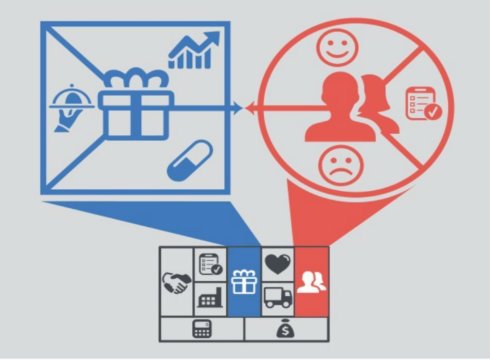Inc42 Daily Brief
Stay Ahead With Daily News & Analysis on India’s Tech & Startup Economy
It’s a cold truth that 90% of the startup fails – , but actually, 9 out of 10 times, it’s the product that fails, not the startup. It has been found out that 66% of the founders drastically change their original plans. However, the fact is ‘Not a better plan A’ but a ‘Path to that plan’ is the key to making things work.
Building a lean startup would mean to build a systematic process for iterating from Plan A to a plan that works (= Scalable and repeatable business model) before running out of resources. The first thing that matters is to find your product/ market fit before you run out of time.
Ash Maurya, author and creator of Lean Canvas, has figured out 10 pointers to get the right product/ market fit for a startup. According to him, these 10 pointers can be further categorised into three broad categories:
- Document your Plan A
- Tackle the riskiest parts first
- Maximise for speed, learning, and focus
Document Your Plan A
Reasonably smart people can rationalise anything but entrepreneurs are especially gifted at this. In simple terms, a business model is the single diagram of your business and is the most important itinerary for an entrepreneur when he/she kick starts journey.
Your Product Is ‘Not’ The Product
Behind most of the ventures, there’s always a spirit of providing a solution to the existing problems. That solution is mistakenly considered as the original product. However, in the true sense, it’s your Business Model, that’s the true product. While focusing on the solution, it’s equally important to take care of other factors such as unique value proposition, cost structure, revenue stream, etc.
Brainstorm Multiple Models And Prioritise Where To Start
Once you have decided with the idea to work towards, the first step is to analyse various options available. For instance, an ecommerce company dealing with apparels can go for a marketplace model (without inventory) or an inventory-led model; web only, app only or omni-channel strategy and more. The point is, before starting with our Plan A, you must be having all possible channels to create your business and should be able to prioritise them as per the need or current scenario.
Tackle the riskiest parts first
‘No risk, no gains’ – This saying is only true when one takes calculative risks. Instead of just gambling, you should try to identify the riskiest parts of your Document A and analyse the risk involved.
Understand The Three Stages Of Your Startup
Stage 1: Problem/ Solution Fit – Do I have a problem worth solving
Stage 2: Product/ Market Fit – Have I built something that people want?
Stage 3: Scale – How do I accelerate growth?
Before attaining a Product/ Market fit, one should focus on validating learnings, doing pivots and qualitative growth of the product. However, at the third stage, the scenario takes a 180 degree shift to focus more on growth, optimisation and quantitative aspects of the product.
Focus on the right macro metrics
There are five key metrics for any startup – Referral, Revenue, Retention, Activation and Acquisition. At stage 1, one must focus on getting the value metrics right, i.e. Activation and Retention along with building revenue streams. While, at stage 3, the focus should be on growth metrics, i.e. Acquisition and Referral.
Maximise For Speed, Learning, And Focus
The ultimate goal is to attain the optimal learning loop, which can be possible only with doing all three simultaneously. In case you achieve only speed and learning, it would result in premature optimisation; with only learning and focus, you will run out of resources; and with speed and focus, you will be just chasing your tail.
Formulate Falsifiable Hypothesis
A hypothesis with which startup decides to work should be falsifiable: Too Vague – Being known as “expert”, will drive early adopters; Specific and Testable – Blog post will drive > 100 early sign ups.
Architect For Learning
Landing page > Pricing > Sign Up
Architect For Speed:
Understanding the market requirements, development of the product, Q/A sessions – all these form an important part of the startup process and impart a great deal of learning. However, the majority of learning happens when the product actually gets released in the market. Therefore, one should work towards shortening this cycle time.
Go Only As fast As You Can Learn
Instead of just going on and on, one should keep clearing the backlogs, have a check on the things-in-process and validate learnings once the task is done. Going as fast as you are learning will help you in further building a sustainable model over a longer period of time.
Validate Qualitatively, Verify Quantitatively
The ideal conversion dashboard is part analytics and part customer relationship management.
Systematically Test Your Model
Once you have opted for a suitable business model and identified the riskiest parts, the model should be further tested step by step.
Note: We at Inc42 take our ethics very seriously. More information about it can be found here.


